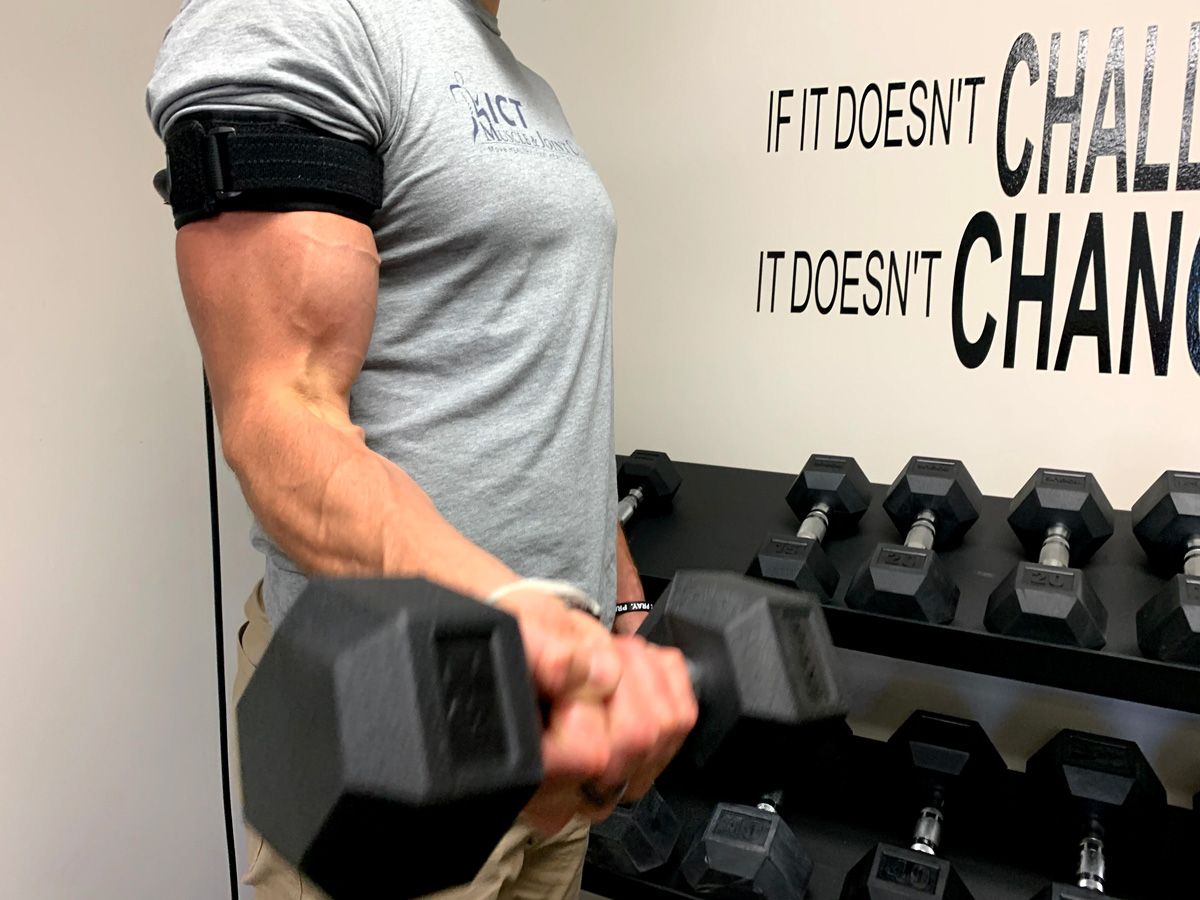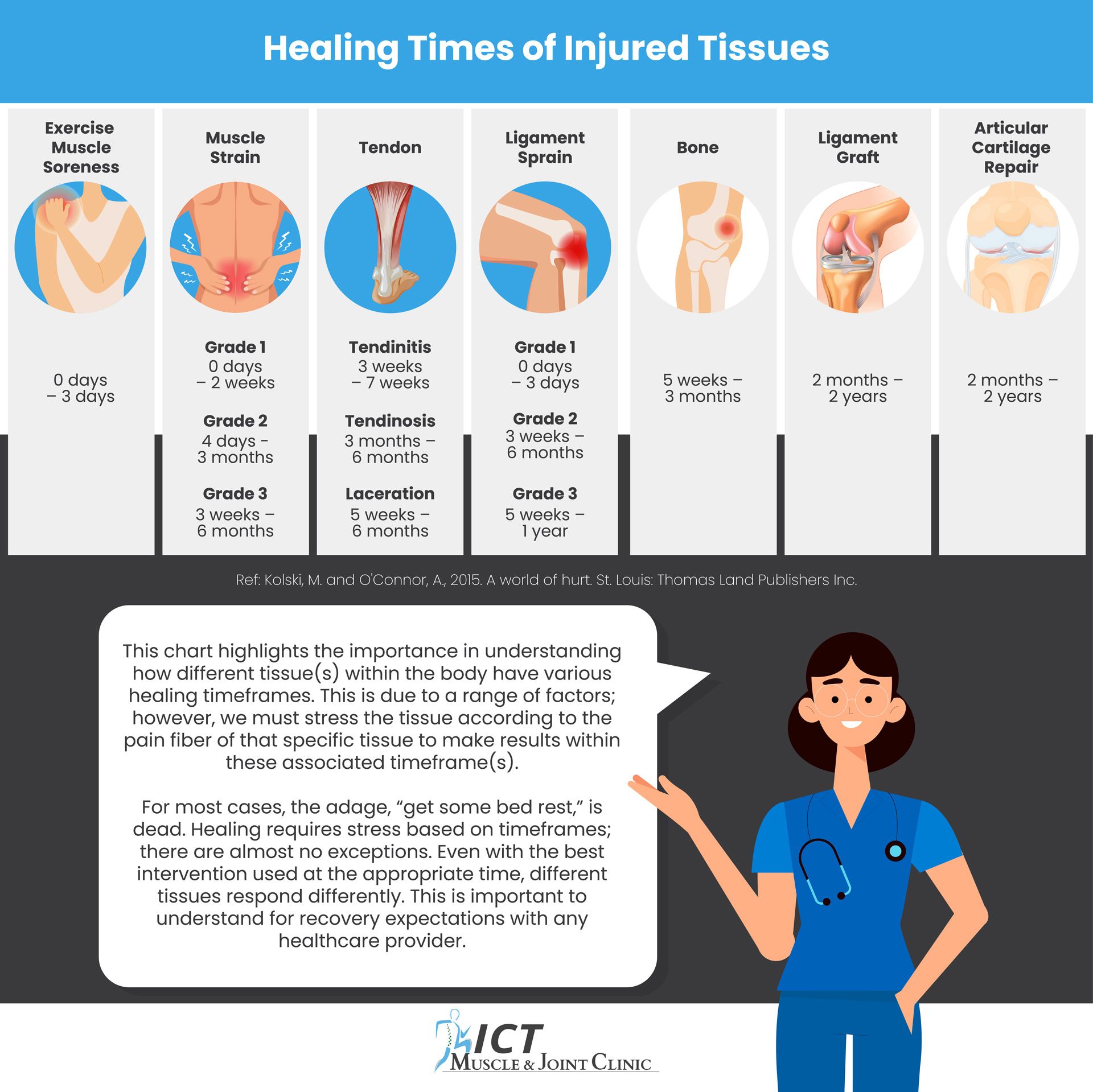1 Loenneke JP, Wilson JM, Marín PJ, Zourdos MC, Bemben MG. Low intensity blood flow restriction training: a meta-analysis. Eur J Appl Physiol. 2012;112(5):1849-1859. doi:10.1007/s00421-011-2167-x.
2 Sundberg CJ. Exercise and training during graded leg ischaemia in healthy man with special reference to effects on skeletal muscle. Acta Physiol Scand Suppl. 1994;615:1-50.
3 Gosselink KL, Grindeland RE, Roy RR, et al. Skeletal muscle afferent regulation of bioassayable growth hormone in the rat pituitary. J Appl Physiol (1985). 1998;84(4):1425-1430. doi:10.1152/jappl.1998.84.4.1425.
4 Godfrey RJ, Whyte GP, Buckley J, Quinlivan R. The role of lactate in the exercise-induced human growth hormone response: evidence from McArdle disease. Br J Sports Med. 2009;43(7):521-525. doi:10.1136/bjsm.2007.041970.
5 Yarasheski KE, Campbell JA, Smith K, Rennie MJ, Holloszy JO, Bier DM. Effect of growth hormone and resistance exercise on muscle growth in young men. Am J Physiol. 1992;262(3 Pt 1):E261-E267. doi:10.1152/ajpendo.1992.262.3.E261.
6 Lange KH, Andersen JL, Beyer N, et al. GH administration changes myosin heavy chain isoforms in skeletal muscle but does not augment muscle strength or hypertrophy, either alone or combined with resistance exercise training in healthy elderly men. J Clin Endocrinol Metab. 2002;87(2):513-523. doi:10.1210/jcem.87.2.8206.
7 Rennie MJ. Claims for the anabolic effects of growth hormone: a case of the emperor's new clothes?. Br J Sports Med. 2003;37(2):100-105. doi:10.1136/bjsm.37.2.100.
8 Liu H, Bravata DM, Olkin I, et al. Systematic review: the effects of growth hormone on athletic performance. Ann Intern Med. 2008;148(10):747-758. doi:10.7326/0003-4819-148-10-200805200-00215.
9 Weltman A, Weltman JY, Schurrer R, Evans WS, Veldhuis JD, Rogol AD. Endurance training amplifies the pulsatile release of growth hormone: effects of training intensity. J Appl Physiol (1985). 1992;72(6):2188-2196. doi:10.1152/jappl.1992.72.6.2188.
10 Pritzlaff CJ, Wideman L, Weltman JY, et al. Impact of acute exercise intensity on pulsatile growth hormone release in men. J Appl Physiol (1985). 1999;87(2):498-504. doi:10.1152/jappl.1999.87.2.498.
11 Doessing S, Heinemeier KM, Holm L, et al. Growth hormone stimulates the collagen synthesis in human tendon and skeletal muscle without affecting myofibrillar protein synthesis. J Physiol. 2010;588(Pt 2):341-351. doi:10.1113/jphysiol.2009.179325.
12 Boesen AP, Dideriksen K, Couppé C, et al. Effect of growth hormone on aging connective tissue in muscle and tendon: gene expression, morphology, and function following immobilization and rehabilitation. J Appl Physiol (1985). 2014;116(2):192-203. doi:10.1152/japplphysiol.01077.2013.
13 Haddad F, Adams GR. Inhibition of MAP/ERK kinase prevents IGF-I-induced hypertrophy in rat muscles. J Appl Physiol (1985). 2004;96(1):203-210. doi:10.1152/japplphysiol.00856.2003.
14 Stewart CE, Pell JM. Point:Counterpoint: IGF is/is not the major physiological regulator of muscle mass. Point: IGF is the major physiological regulator of muscle mass. J Appl Physiol (1985). 2010;108(6):1820-1832. doi:10.1152/japplphysiol.01246.2009.
15 Hameed M, Lange KH, Andersen JL, et al. The effect of recombinant human growth hormone and resistance training on IGF-I mRNA expression in the muscles of elderly men. J Physiol. 2004;555(Pt 1):231-240. doi:10.1113/jphysiol.2003.051722.
16 Velloso CP, Harridge SD. Insulin-like growth factor-I E peptides: implications for aging skeletal muscle. Scand J Med Sci Sports. 2010;20(1):20-27. doi:10.1111/j.1600-0838.2009.00997.x.
17 Abe T, Yasuda T, Midorikawa T, et al. Skeletal muscle size and circulating IGF-1 are increased after two weeks of twice daily “KAATSU” resistance training. Int J Kaatsu Train Res. 2005;1: 6–12. doi:10.3806/ijktr.1.6.
18 Kadi F, Schjerling P, Andersen LL, et al. The effects of heavy resistance training and detraining on satellite cells in human skeletal muscles. J Physiol. 2004;558(Pt 3):1005-1012. doi:10.1113/jphysiol.2004.065904.
19 Kadi F, Thornell LE. Concomitant increases in myonuclear and satellite cell content in female trapezius muscle following strength training. Histochem Cell Biol. 2000;113(2):99-103. doi:10.1007/s004180050012.
20 Olsen S, Aagaard P, Kadi F, et al. Creatine supplementation augments the increase in satellite cell and myonuclei number in human skeletal muscle induced by strength training [published correction appears in J Physiol. 2006 Sep 15;575(Pt 3):971]. J Physiol. 2006;573(Pt 2):525-534. doi:10.1113/jphysiol.2006.107359.
21 Nielsen JL, Aagaard P, Bech RD, et al. Proliferation of myogenic stem cells in human skeletal muscle in response to low-load resistance training with blood flow restriction. J Physiol. 2012;590(17):4351-4361. doi:10.1113/jphysiol.2012.237008.
22 Roth SM, Martel GF, Ferrell RE, Metter EJ, Hurley BF, Rogers MA. Myostatin gene expression is reduced in humans with heavy-resistance strength training: a brief communication. Exp Biol Med (Maywood). 2003;228(6):706-709. doi:10.1177/153537020322800609.
23 Forbes D, Jackman M, Bishop A, Thomas M, Kambadur R, Sharma M. Myostatin auto-regulates its expression by feedback loop through Smad7 dependent mechanism. J Cell Physiol. 2006;206(1):264-272. doi:10.1002/jcp.20477.
24 Hill JJ, Qiu Y, Hewick RM, Wolfman NM. Regulation of myostatin in vivo by growth and differentiation factor-associated serum protein-1: a novel protein with protease inhibitor and follistatin domains. Mol Endocrinol. 2003;17(6):1144-1154. doi:10.1210/me.2002-0366.
25 Saremi A, Gharakhanloo R, Sharghi S, Gharaati MR, Larijani B, Omidfar K. Effects of oral creatine and resistance training on serum myostatin and GASP-1. Mol Cell Endocrinol. 2010;317(1-2):25-30. doi:10.1016/j.mce.2009.12.019.
26 Willoughby DS. Effects of heavy resistance training on myostatin mRNA and protein expression. Med Sci Sports Exerc. 2004;36(4):574-582. doi:10.1249/01.mss.0000121952.71533.ea.
27 Gualano B, Neves M Jr, Lima FR, et al. Resistance training with vascular occlusion in inclusion body myositis: a case study. Med Sci Sports Exerc. 2010;42(2):250-254. doi:10.1249/MSS.0b013e3181b18fb8.
28 Santos AR, Neves MT Jr, Gualano B, et al. Blood flow restricted resistance training attenuates myostatin gene expression in a patient with inclusion body myositis. Biol Sport. 2014;31(2):121-124. doi:10.5604/20831862.1097479.
29 Fielder PJ, Mortensen DL, Mallet P, Carlsson B, Baxter RC, Clark RG. Differential long-term effects of insulin-like growth factor-I (IGF-I) growth hormone (GH), and IGF-I plus GH on body growth and IGF binding proteins in hypophysectomized rats. Endocrinology. 1996;137(5):1913-1920. doi:10.1210/endo.137.5.8612531.
30 Sims NA, Clément-Lacroix P, Da Ponte F, et al. Bone homeostasis in growth hormone receptor-null mice is restored by IGF-I but independent of Stat5. J Clin Invest. 2000;106(9):1095-1103. doi:10.1172/JCI10753.
31 Brixen K, Nielsen HK, Mosekilde L, Flyvbjerg A. A short course of recombinant human growth hormone treatment stimulates osteoblasts and activates bone remodeling in normal human volunteers. Journal of Bone and Mineral Research. 1990;5(6):609–618. doi 10.1002/jbmr.5650050610.
32 Erdtsieck RJ, Pols HA, Valk NK, et al. Treatment of post-menopausal osteoporosis with a combination of growth hormone and pamidronate: a placebo controlled trial. Clin Endocrinol (Oxf). 1995;43(5):557-565. doi:10.1111/j.1365-2265.1995.tb02920.x.
33 Clemmesen B, Overgaard K, Riis B, Christiansen C. Human growth hormone and growth hormone releasing hormone: a double-masked, placebo-controlled study of their effects on bone metabolism in elderly women. Osteoporos Int. 1993;3(6):330-336. doi:10.1007/BF01637319.
34 Gillberg P, Mallmin H, Petrén-Mallmin M, Ljunghall S, Nilsson AG. Two years of treatment with recombinant human growth hormone increases bone mineral density in men with idiopathic osteoporosis. J Clin Endocrinol Metab. 2002;87(11):4900-4906. doi:10.1210/jc.2002-020231.
35 Van der Lely AJ, Lamberts SW, Jauch KW, et al. Use of human GH in elderly patients with accidental hip fracture. Eur J of Endocrinology. 2000;143(5):585–592.
36 Yeo AL, Levy D, Martin FC, et al. Frailty and the biochemical effects of recombinant human growth hormone in women after surgery for hip fracture. Growth Horm IGF Res. 2003;13(6):361-370. doi:10.1016/j.ghir.2003.08.001.
37 Krusenstjerna-Hafstrøm T, Rasmussen MH, Raschke M, Govender S, Madsen J, Christiansen JS. Biochemical markers of bone turnover in tibia fracture patients randomly assigned to growth hormone (GH) or placebo injections: Implications for detection of GH abuse. Growth Horm IGF Res. 2011;21(6):331-335. doi:10.1016/j.ghir.2011.08.003.
38 Weissberger AJ, Anastasiadis AD, Sturgess I, Martin FC, Smith MA, Sönksen PH. Recombinant human growth hormone treatment in elderly patients undergoing elective total hip replacement. Clin Endocrinol (Oxf). 2003;58(1):99-107. doi:10.1046/j.1365-2265.2003.01700.x.
39 Raschke M, Rasmussen MH, Govender S, Segal D, Suntum M, Christiansen JS. Effects of growth hormone in patients with tibial fracture: a randomised, double-blind, placebo-controlled clinical trial. Eur J Endocrinol. 2007;156(3):341-351. doi:10.1530/EJE-06-0598.
40 Schipani E, Maes C, Carmeliet G, Semenza GL. Regulation of osteogenesis-angiogenesis coupling by HIFs and VEGF. J Bone Miner Res. 2009;24(8):1347-1353. doi:10.1359/jbmr.090602.
41 Hunt TK, Aslam R, Hussain Z, Beckert S. Lactate, with oxygen, incites angiogenesis. Adv Exp Med Biol. 2008;614:73-80. doi:10.1007/978-0-387-74911-2_9.
42 Constant JS, Feng JJ, Zabel DD, et al. Lactate elicits vascular endothelial growth factor from macrophages: a possible alternative to hypoxia. Wound Repair Regen. 2000;8(5):353-360. doi:10.1111/j.1524-475x.2000.00353.x.
43 Takano H, Morita T, Iida H, et al. Hemodynamic and hormonal responses to a short-term low-intensity resistance exercise with the reduction of muscle blood flow. Eur J Appl Physiol. 2005;95(1):65-73. doi:10.1007/s00421-005-1389-1.
44 Manini TM, Yarrow JF, Buford TW, Clark BC, Conover CF, Borst SE. Growth hormone responses to acute resistance exercise with vascular restriction in young and old men. Growth Horm IGF Res. 2012;22(5):167-172. doi:10.1016/j.ghir.2012.05.002.
45 Kraemer WJ, Marchitelli L, Gordon SE, et al. Hormonal and growth factor responses to heavy resistance exercise protocols. J Appl Physiol (1985). 1990;69(4):1442-1450. doi:10.1152/jappl.1990.69.4.1442.
46 Kraemer WJ, Gordon SE, Fleck SJ, et al. Endogenous anabolic hormonal and growth factor responses to heavy resistance exercise in males and females. Int J Sports Med. 1991;12(2):228-235. doi:10.1055/s-2007-1024673.
47 Moritani T, Sherman WM, Shibata M, Matsumoto T, Shinohara M. Oxygen availability and motor unit activity in humans. Eur J Appl Physiol Occup Physiol. 1992;64(6):552-556. doi:10.1007/BF00843767.
48 Sundberg CJ. Exercise and training during graded leg ischaemia in healthy man with special reference to effects on skeletal muscle. Acta Physiol Scand Suppl. 1994;615:1-50.
49 Miller, KJ, Garland, SJ, Ivanova, T, Ohtsuki, T. Motor-unit behavior in humans during fatiguing arm movements. J. Neurophysiol. 1996;75(4): 1629–1636. Doi: 10.1152/jn.1996.75.4.1629.
50 Loenneke JP, Wilson JM, Marín PJ, Zourdos MC, Bemben MG. Low intensity blood flow restriction training: a meta-analysis. Eur J Appl Physiol. 2012;112(5):1849-1859. doi:10.1007/s00421-011-2167-x.
51 Odinsson A, Finsen V. Tourniquet use and its complications in Norway. The Journal of Bone and Joint surgery. British Volume. 2006 Aug;88(8):1090-1092. DOI: 10.1302/0301-620x.88b8.17668. PMID: 16877612
52 Kalla TP, Younger A, McEwen JA, Inkpen K. Survey of tourniquet use in podiatric surgery. J Foot Ankle Surg. 2003;42(2):68-76. doi:10.1016/s1067-2516(03)70004-0.

